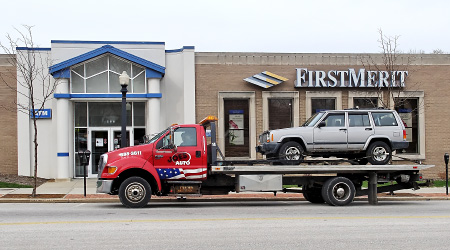Consumer Credit: Repossession Explained

Certain adverse financial events sometimes occur in a consumers' life due to job loss or medical difficulties which can result in falling behind on bills. If one of those bills is a vehicle loan and a consumer is unable or unwilling to make payment, then there will most likely be a repossession. Why do repossessions take place? What happens to the outstanding balance? What does it mean for your credit report? Answers to these questions will hopefully provide a better understanding of the repossession process and its consequences.
What is a Repossession?
Most consumers are unable to purchase a home or vehicle outright due to the amount required. It is common for most people to finance a vehicle purchase using an auto loan from a bank or credit union. Vehicle loans are a secured type of loan because they are backed by a tangible asset. The secured nature of the loan means if the borrower defaults on a loan then the lender has a means to recoup part or all of the outstanding balance by seizing and then selling the asset. In relation to a vehicle loan, if a car owner stops making payments then the lender takes possession of the vehicle. This is not in a lenders best interest however, and they will normally take every step possible to renegotiate loan terms or allow the borrower to catch up on payments prior to a repossession. Regardless of the financial difficulties, at some point the vehicle will be repossessed for failure to pay on the outstanding loan.
The Repossession Process
When a vehicle is repossessed, the lender isn't allowed to just send out an employee, grab the car and bring it back. There is a specific legal process of notification and using law enforcement to facilitate a vehicle repossession. Once a repossession has been declared, law enforcement is notified and an officer will accompany a bank representative or more often, a subcontracted third-party, to seize the vehicle. Most vehicle repossessions take place late in the evening when there is a high likelihood of both vehicle and owner being present at a specific location like a personal residence. Once the vehicle is in the lenders' possession, they will make a final attempt in allowing the borrower to get caught up on payments or pay off the outstanding balance in addition to applicable towing fees and penalties. If after 2 to 3 weeks payment is not received, the vehicle is sold at a police or sheriff auction. The proceeds from the sale are then applied against the outstanding balance and if there is a surplus, the excess will be paid to the borrower but more often than not there is a deficit which is still owed.
Some Remaining Issues
Once a repossessed vehicle has been sold at auction, many vehicle owners feel that's the end of the story. Of course, this is never the case and the outstanding loan balance must still be repaid. If a consumer purchases a $15,000 vehicle which is subsequently repossessed and sold at auction for $10,000 then the remaining balance of $5,000 must still be paid. The lender will notify the borrower of the outstanding balance and if it's not repaid a lawsuit is likely where a judgment will be rendered by the courts ordering the consumer to pay the balance. This judgment will appear on a consumer's credit report for up to seven years during which time it will be almost impossible to receive additional credit or loans. So not only does the consumer no longer own a vehicle, they have a legal judgment against them and their credit is ruined for almost a decade. Needless to say, avoid a vehicle and possession if at all possible.
Elsewhere on StockMonkeys.com







